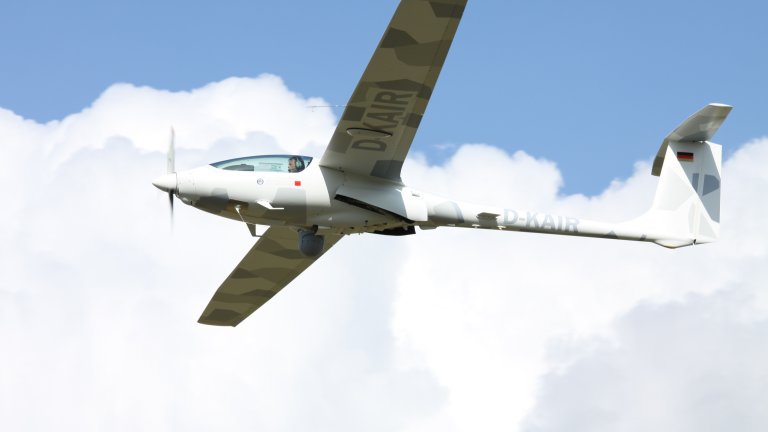
Scouts in the Skies
"Aerial working platform” is what the cutting-edge motor glider ASP S 15-1 by ECARYS, a subsidiary of Stemme, is also called. With this “utility aircraft”, the renowned medium-sized business from Strausberg scored another slam dunk. It is equipped with variable sensors, and thanks to its extraordinary camouflage characteristics, the S 15 can be used for a broad variety of surveillance and observation purposes in such areas as homeland security, border protection and flood prevention, or it can also be used for the search of natural resources.
In addition to its main business area of sports aircrafts, in which it has produced the high-performance gliders and global bestsellers S 10 and S 6, the company Stemme AG has a subsidiary, ECARYS, which focuses on rather “discreet” products. ECARYS markets the so-called utility aircraft ES-15, a flying platform that can be adapted to the clients’ intended purposes by equipping it with specifically tailored surveillance technology. The business prospects are excellent. The outstanding flight and camouflage characteristics of the ES-15 are being appreciated across the globe from Europe to Mexico, from the USA to South-East Asia.
“Among our clients are research institutions, aerospace organisations, but also law enforcement agencies and military offices,” says Phillip Scheffel, Head of Development at Stemme. The fields in which such a “spying” glider can be used rank from environmental protection, the surveillance of volcanic activity, atmospheric research to geological surveying, but it can also be used for the surveillance of industrial plants and infrastructure, as well as border protection and domestic security.
Intelligent, light and discreet
One of the most important market-relevant unique selling points of the aerial working platform ASP S 15-1 is its very light weight. The folks from Strasberg made sure that the payload of 400 kg includes all of the necessary surveillance equipment, which often comprises infrared or electro-optical sensors or radar systems. “In comparison with many of our competitors, this allows us to avoid international export restrictions that are in place for loads of 1,100 kg and above,” explains Scheffel. Furthermore, the platform has received a full licence from the European Aviation Safety Agency (EASA).
Ideal conditions at the location
Since the early 1990s, the company group Stemme has had its business location at the airfield Strausberg. “With a connection to the city train,” stresses Scheffel, as the train played an important role in the recruitment of skilled employees, which, in turn, was vital for the company as the labour market in the field of engineering was pretty much depleted. He added that the company had never regretted moving from West Berlin and Braunschweig to Brandenburg.
In the Fraunhofer Institute for Applied Polymer Research Wildau, the aircraft manufacturer ECARYS found a partner for the initial development stage of the ES-15, during which a successful cooperation took place in the areas of structure technologies and engines. “The cooperation with the Technical University of Dresden has also helped us make crucial progress,” Scheffel comments on his experience. “This cooperation helped us with the issue of maximising the cargo load of a rather small working platform.” Another “neighbour” within the region – the Technical University of Berlin – developed the innovative flight management system LAPAZ for ECARYS and the ES-15. LAPAZ is a highly precise system with enhanced 3-D navigation.
In addition to the equity capital from BC Brandenburg Capital GmbH, the state of Brandenburg contributed about €1 million through the funds of the “Extensive Guideline” (“Große Richtlinie”). But those are not the only reasons why the region is ideal for Stemme/ECARYS as other important conditions are met as well. “Here at this airfield we can expand without limitations and furthermore the airspace to the east is always available for test flights. This is heaven!”